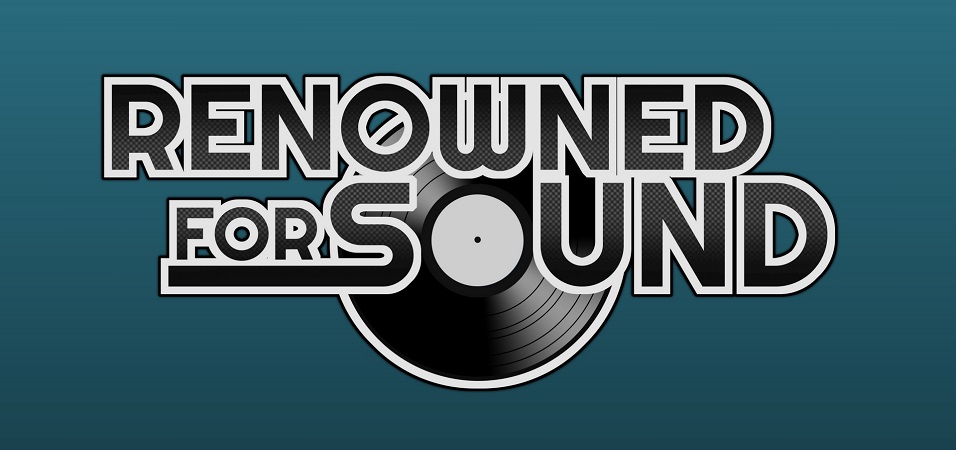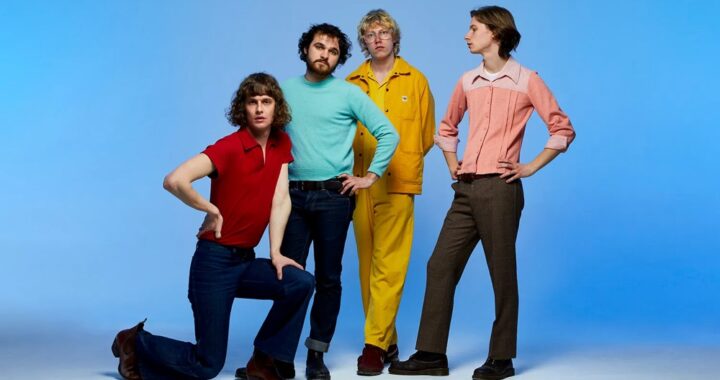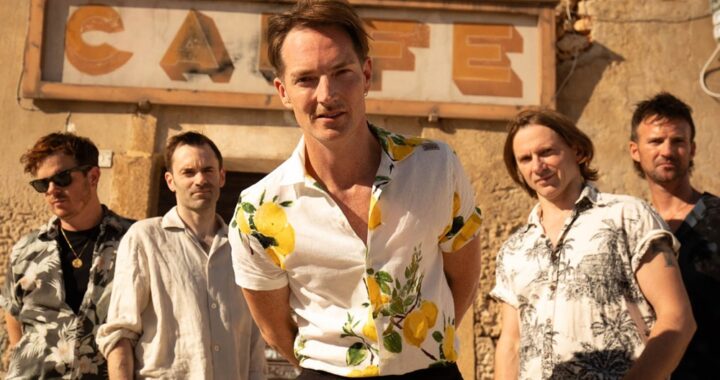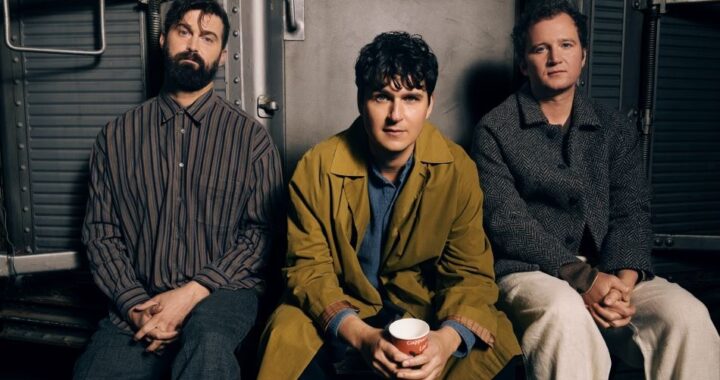Live Review: Laneway Festival – 7th February 2016 – Sydney College of the Arts, Sydney, Australia
13 min read
Dating back to 2004, the Laneway Festival has become the go-to institution for live indie music. Whilst not without problems, Laneway has always attracted big names; from The xx, to Lorde, to Caribou and FKA Twigs last year. Without fail, each year the line-up features a smattering of impressive names, and 2016 was no exception. Australia was well represented through Flume and Hermitude, whilst international synth-pop acts like CHVRCHES and Grimes made up some of the bigger names. Combining synth-pop, EDM, hip-hop, metal, psych-rock, and several undefinable genres, the lineup for Laneway 2016 was varied and comprehensive.
There are certain things about music festivals that are fairly consistent: overcrowding, expensive food and drinks, muffled sound, and above all, walking. Laneway actually managed to handle these all to varying degrees of success. The overcrowding was rarely problematic, only becoming an issue when the vast majority of the attendees tried to squeeze into one of the smallest stages for Purity Ring’s oddly placed show. The food and drink, whilst expensive, was varied and of a high standard, with numerous ethnicities and styles of food being covered, from pizza and beer, to Nepalese dishes.
The sound was remarkably good, which is important considering the complaints the 2015 festival received for the sound quality. The smaller stages (Mistletone and Future Classic) both sounded fantastic, and were placed between buildings in such a way that they were afforded a sense of intimacy uncommon to festivals. The Park and Garden stages were located on a more traditional grassy field, and suffered from muddier sound as a result, but when close enough to the stage (admittedly very difficult during popular shows) it sounded fantastic. Finally, given that the whole festival was contained in the fairly small Sydney College of the Arts, walking was almost a non-issue (although certain barricades did become slow moving foot-traffic if too many people attempted to pass through them). Overall, the festival was very well planned out, with refreshingly few dramatic clashes in timetable (although I was unable to see some big artists, like Beach House and Vince Staples), good food, a pleasant audience, and above all, great music.
Ali Barter
Hailing from Melbourne, Ali Barter opened Laneway with her catchy, emotional take on rock, playing on the sunny Mistletone Stage. Her music leans towards mellow and nostalgia, with bursts of excitement, and the small, early-day crowd swayed back and forth with her woozy melodies. Barter’s voice imparts a lot of emotion into her songs, and she seemed happy and excited to be on stage. Alternating between playing fuzzed-out power ballads, and occasional Nirvana-lite crunchy blues, Ali Barter and her band were a great introduction to Laneway, and feel like they have a lot of potential to end up in a more prominent slot.
Methyl Ethel
Off the back of their 2015 debut album Oh, Inhuman Spectacle, Perth band Methyl Ethel took the Garden Stage to play their signature brand of psychedelic rock. Their live sound is eerily reminiscent of Tame Impala’s, but the band puts their own spin on the genre. The circular guitar figures are caked in reverb and effects, and strongly recall The Wall-era Pink Floyd, and the heavy, booming basslines draw comparisons to contemporary R&B. The slower, funkier songs were their most distinctive material, whereas the more hazy songs tended to lack notable melodies. Methyl Ethel feel like a band still finding their sound, although their swirling effects did very well to fill up the vast spaces before the Garden Stage.
High Tension
The one metal act at Laneway, Melbourne hardcore band High Tension had to represent their whole genre for the day, and they delivered. Vocalist Karina Utomo’s voice is positively demonic, alternatively piercing and serene. The band played the songs from their new LP Bully with energy and ferocity, with the drums in particular having a punch and impact that cut through the crowd. Said crowd were obviously enjoying the set, dancing and headbanging to the raging tunes, which did provide a stirring change of pace from the somewhat lethargic acts which preceded them.
Blank Realm
There’s something infectious about an act that can have fun whilst performing, and Brisbane band Blank Realm certainly manage that. Handily recreating the songs from their 2015 album Illegals in Heaven, the band danced around the stage and blasted their distorted, lo-fi but catchy songs across the grass of the Park Stage. The mere presence of a keytar player in the band does more to describe the sense of joyousness the band exudes than words could ever hope to. Blank Realm were perhaps too idiosyncratic a band for the wide open space of the Park Stage, being suited to a more intimate venue, but their music and stage presence were so fun that it more than made up for it.
Majical Cloudz
Montreal act Majical Cloudz have found a way to turn electronica into a force of pure feeling. As vocalist Devon Welsh sang in his vulnerable yet commanding voice, a distorted choir of anguished voices cried out, and waves of Vangelis synths washed over the Garden Stage. The deafening bass notes that built up during Silver Car Crash almost threatened to overload the song, but Welsh’s voice kept it grounded. His idiosyncratic lyrics convey love and grief at the same time – “I want to kiss you / inside a car that’s crashing” – and held the crowd enraptured.
DMA’s
Originality is a contemptuous issue amongst music circles. Whilst being “new” is not necessarily good, the term is often used as a positive signifier. Much the same way, “derivative” is often used as mockery. DMA’s music is not original in the slightest, but they are still an engaging presence, and have struck a chord with many music fans, judging by the size of the crowd stationed in front of the Park Stage. Their acoustic strumming, and phased-out guitar solos owe a heavy debt to Brit-pop, Oasis in particular, but it proves an engaging well from which to draw. Whilst their act did become repetitive in terms of style, and the band could stand to loosen up their stage presence a little, their songs are catchy, and above all, fun.
East India Youth
On record, critics’ favourite East India Youth sounds very formal, a more EDM driven take on the sounds of Brian Eno and the Pet Shop Boys. Live, William Doyle’s act is a whole different animal. With a bass guitar slung high across his chest, playing melodies on a keyboard, adjusting parameters with an array of knobs, banging out percussion on a drum pad, fiddling with his laptop, and singing sweet, note-perfect melodies, Doyle resembles a 21st century one-man-band. As a display of technical skill, the show is impressive, but as an actual concert, it’s transcendent. Hidden away on the Future Classic stage, Doyle’s music combined huge, glittering shoegaze synthesisers, pounding beats, chugging bass guitar solos, and catchy vocal lines. The show enveloped the senses, and Doyle’s enthusiasm on stage was electrifying. There were several moments in which he hit the notes on his keyboard with such force that it shook and nearly fell over. The highlights were 2015 single Turn Away, and older track Heaven, How Long, which featured a long post-rock-indebted build-up to a punishing climax of electronics and bass.
DIIV
Compared to the energy of East India Youth, the relaxed grooves of DIIV’s songs were always going to seem tame in comparison. Whilst DIIV have excellent songs, and were an enjoyable presence, the very nature of their music doesn’t lend itself to the anonymity of a festival. The band’s songs require immersion and analysis, with the dark lyrics of singer Zachary Cole Smith lending the songs more depth than their Sonic Youth styled rock allows. Their stage presence was relaxed and jovial, but because of this the songs lacked the feeling they have on record. The guitar tones blurred together, and lyrics were difficult to make out through the effects and the echoing space of the Mistletone Stage. Unfortunately robbed of their depth, great songs like Dopamine simply became good ones.
Shamir
As one of the most buzzed about musicians of 2015, Shamir had a lot to live up to. The crowd filled the Future Classic stage quickly, and the feeling in the air was that Shamir was the first real blockbuster act of the day. He opened with two of his lesser known tracks, Vegas, and In for the Kill, giving the audience time to come in before he performed his bigger hits, On the Regular and Call it Off. Shamir has endless charisma, chatting to the crowd, bantering with his equally charming backing vocalists, and the energy he brought to the stage was delightful. The disco-indebted instrumentals seemed to be played entirely live by the band, and basslines that sounded as though they were run through an arpeggiator were being played straight, by one of the band’s keyboardists. Whilst Shamir and his band didn’t venture outside of their songs’ set structures, the songs themselves are so effortlessly catchy that it didn’t matter, and their show was an easy highlight of the festival.
Japanese Wallpaper
At 17 years old, the simple fact that Gab Strum has managed to secure a prominent place in the lineup of Laneway is extremely impressive, in of itself. Furthermore, his band drew a sizeable crowd, with many members of Shamir’s audience sticking around to listen to his chilled out grooves. With hazy synthesisers and echoing guitars, Japanese Wallpaper have a very sweet, listenable sound, although it somewhat lacks distinctive characteristics. It’s telling that the guest spot from Airling elicited a huge cheer from the crowd, as her song Forces is by far Strum’s best work. It has the melodic and dynamic qualities that the other, more ambient tracks simply can’t match, and as such, the set tended to blur together somewhat.
The Internet
Of the Odd Future offshoots, The Internet has to be the least idiosyncratic, which is by no means a bad thing. Whilst Tyler the Creator and Earl Sweatshirt fall deep into a conscious rap rabbit hole, and Frank Ocean pushes the boundaries of pop, The Internet exists just to write sexy jams. Lead singer Syd compensates for her small stature with an outsized swagger, and the band seem as relaxed as humanly possible. The music is funky and sultry, and the swaying crowd of the Garden Stage loved the diversion from the more animated music that preceded it. That’s not to say the show lacked energy, as the songs exuded a subdued tension, which was left to simmer.
Hermitude
“How to make an electronic performance interesting” is one of the most pressing questions facing many young musicians today. Some artists improvise sections of their music, some artists build it from the ground up, some rely on spectacular light and video presentations, and some rely on the intimacy of small venues to convey what they’re actually doing. Hermitude played their set on the Park Stage, in the middle of the afternoon, on a bright and sunny day, which presents their show with some problems. A light show isn’t really possible in sunlight, and that the huge standing area prevents the audience from actually being able to see the small hand movements the duo were making.
Their solution was a video stream projected behind the band, alternating shots of their hands playing, the crowd, and iTunes visualiser-esque graphics. Unfortunately, this wasn’t enough to lend the show a sense of dynamism, since they were largely playing their songs the same way as they are on record, note for note. The entire performance, whilst loud and danceable, felt vaguely impersonal, and begged the question of why one should see the band live, when it didn’t feel tangibly different from their recorded presence?
Goldlink
Whilst Goldlink took his time coming onto the Future Classic stage (his DJ performed for around 10 minutes as an introduction), the DC rapper brought so much energy and enthusiasm to his performance, than any longer than he performed would have almost been overwhelming. Performing songs like Dance On Me (featuring among other things, a very graphic description of oral sex), he easily engaged the crowd to “bounce”. He threw his wiry body across the stage as he rapped, his house-meets-90’s rap beats giving the small space around the stage the feeling of a big house party. Whilst the instrumentation could have been more dynamic (beats were just played by the DJ), Goldlink himself was such a charismatic presence that it was unnecessary.
Grimes
After her hugely successful 2015, Claire Boucher (as Grimes) seems to have honed her “warrior poet” aesthetic to perfection. Of all the artists at Laneway, Grimes was the most noticeably different in her live show, as opposed to on record. Her songs were stretched out and restructured, such as the added trap intro before Oblivion, which still stands as one of the best songs of the decade. Kill vs Maim caused her huge crowd to erupt into dance, as she screamed “B E H A V E” down the microphone. Her stage show seemed both expertly choreographed, and completely improvised at the same time, and Boucher’s own bizarre dancing was matched by two women wearing a variety of outfits, performing routines, and even waving around Sai swords later on in the show. Grimes has fashioned herself and her band as a militarised form of feminism, wearing camouflage outfits combined with anime paraphernalia. Her music is like femininity in its most primal form, and her performance feels important, yet is still incredibly entertaining.
CHVRCHES
There’s something indescribable about some musicians, that can really only be understood by seeing them perform. This “star-quality” is a combination of things, but at the end it just comes down to charisma, and a person’s ability to command a stage. CHVRCHES’ Lauren Mayberry is a star. Between songs, she idly chats with the crowd about spiders in her Scottish lilt, and the jovial chuckles that answer her give the impression of old friends talking.
The songs that the band plays are also stunning. Drawing material from both The Bones of What You Belive and Every Open Eye, every single song sounds like a hit waiting to happen, from the swirling bluster of opener Never Ending Circles, to the closing song (which elicited a huge cheer) The Mother We Share, every chorus is catchy, and every synth riff sticks in the brain. The standout was Clearest Blue, which builds from an energetic but small pop tune into an explosive climax, with a 2-note synth riff that sounds so metallic and psychical it’s hard to imagine it’s a generated sound. CHVRCHES are a band that arrived with such confidence and control of their aesthetic, that even if they never varied their sound at all, they’d still be a fantastic act.
Flume
Easily the biggest name at the festival, Laneway 2016 very much centred around Flume’s performance. However, it suffered from many of the same issues as Hermitude’s, since the show largely consisted of Harley Streten standing behind a lavish podium, banging out the loops that make up his songs. The blinding light show helped, and gave the performance more grandeur than in otherwise would have, but the songs still felt very much like they were being played straight from the record without meaningful variation. The most interesting parts of the show was the appearance of several guests, such as Kai, the singer on Flume’s recent single Never Be Like You. Her presence suggested that the show could have used a more human element in the large Park Stage space, and as such, his older material dramatically suffered by comparison.
Sophie/QT
Sophie, QT and the PC Music collective may just be the most exciting group of people working in music right now. Like Odd Future back in 2010, PC Music is twisting the sounds and ideas of popular music, and making them abrasive and difficult. The group make divisive, challenging music, but instead of using violent or unpleasant sounds, they draw from J-pop and trap, taking the popular sounds of today to their logical conclusions. As much an art show as a musical performance, Sophie and QT took advantage of the intimacy of the Future Classic stage to deliver something visceral and punishing, all whilst projecting an ironic visage of garish cuteness.
Sophie’s songs consist of sounds that sound physical, but are in fact synthesised from scratch (Lemonade sounds like bubbles popping, Hard sounds like metal and latex banging together), which lends the performance a layer of artifice, and helps contextualise the more conceptual aspects of the show. When QT emerged during the second half of the set, she walked up to Sophie’s desk and began to twist knobs seemingly at random, begging the question of whether Sophie had ever actually been playing at all. During the climactic performance of Hey QT, Sophie took several breaks from “playing” to sip from the group’s fictional energy drink, and the audience was left unsure of what they had actually seen. The two were prepared to use their stage to question the rules and logic of pop and consumerism, and their performance was the perfect mix of fascinating and difficult.
Purity Ring
An odd choice for the last act of the festival, Purity Ring were somewhat of a come-down, following the huge electronics of Flume and Sophie. This wasn’t aided by the thousands of people attempting to rush into the small Mistletone Stage area, rendering the show nigh-on impossible to actually see. However, even from the back of the venue, Purity Ring’s songs sounded bright and sharp, with a tension that was never truly resolved. The stage design was impressive, with a variety of lit-up objects littered across it. However, the band’s usually densely textured music felt generic from a distance, the detail in their sounds impossible to make out. 2015 single Push Pull came away best, as Megan James sultry vocals carried across the space, and the pumping rhythms lent energy to a set that largely lacked it. Perhaps earlier in the day the band would have faced a warmer reception, but as a finishing act, Purity Ring was sadly anticlimactic.



